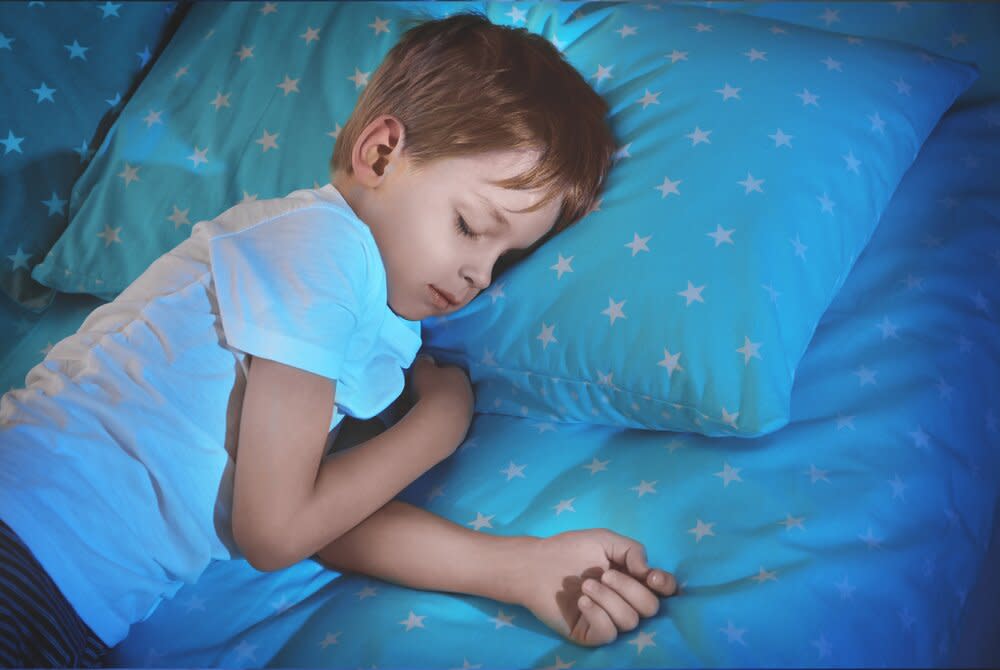5 Ways to Prep Your Kids for Daylight Saving Time

Africa Studio/Shutterstock
Daylight saving time is no fun for anyone. That groggy, "I really don't want to get out of bed" feeling lingers for days after you change your clocks, and it can make any already sleep-deprived parent feel exhausted. But the change in sleep patterns can be even tougher on your kids. "Young children need more sleep and don't tolerate sleep deprivation as well as adults," explains Daniel Lewin, Ph.D., associate director of sleep medicine at Children's National Health System in Washington, D.C. "The loss of just one hour can really affect a child's attention span, appetite, and overall mood."
The good news: You can take steps to help mitigate the effects of daylight saving time. These five tips will help you do just that.
Take Baby Steps
In the spring, don't just set the clock forward an hour one night and expect your child to get right back in sync; It takes some time to adapt to that loss of sleep. To help adjust, Dr. Lewin suggests gradually shifting your kid's bedtime in preparation for daylight saving time. So if your child goes to bed at 8 p.m., about four days before the time change, put them to bed at 7:45 p.m., then 7:30 p.m., and so on until they're going to bed as close to 7 p.m. as possible. If possible, wake them up a little earlier, as well. "Doing this step-by-step is not as much a shock to the system as it is when you abruptly expect your child to fall asleep an hour earlier after the time change," Dr. Lewin says. "If it's too difficult to get your child to bed earlier, which is often the case in older kids, then just focus on advancing the wake up time a bit instead."
When daylight saving time ends in the fall, this gradual approach can still help—follow the same guidelines, just push the wake-up time and bedtime a little later rather than earlier.
RELATED: How to Develop a Bedtime Routine
Control the Lights
Melatonin is a hormone that helps regulate your body's internal circadian clock. It increases in the evening as it becomes dark, which helps induce sleep, and shuts down when it's light out, which can then increase wakefulness and alertness. But daylight saving time throws that natural cycle out of whack a bit, and that can be particularly difficult for kids. (Are yours eager to go to sleep when it's light outside or to wake up when it's dark out? We didn't think so!)
To help, Dr. Lewin recommends dimming the lights in your child's bedroom and turning off all electronics about 30 minutes to an hour before bedtime. (According to The National Sleep Foundation, such devices can reduce sleep time, sleep quality, and daytime alertness because of the light exposure as well as the fact that they engage the brain right before bedtime.) In the morning, get your child in the light as much as possible. Natural sunlight is best, so if weather permits, have breakfast outside or have your child help walk the dog. If that's not an option, turn on the lights in the house so it's nice and bright.
When daylight saving time ends in the fall, the key is making sure your child doesn't go to bed too early or wake up earlier than they already do (what parent wants that?) So when you "fall back," make sure your child has some light exposure in the early evening and ensure that their room isn't too bright in the morning. (Two words: Blackout shades!)
RELATED: Is There a Best Bedtime for Kids?
Stick with a Routine
When daylight saving time begins or ends, it's especially important to stick with a bedtime routine, as your child is now dealing with a change in schedule that might throw them off. "For young children, it's absolutely critical that they have a routine during bedtime," says Dr. Lewin. "That's what helps create a powerful signal for sleep." One option: giving your child a warm bath, reading them a book, and snuggling together before lights out.
Get Enough Sleep Now
Also, in the days before you change your clocks, make sure your child is getting plenty of shut-eye. "Sleep begets sleep," explains Dr. Lewin. "So going into daylight saving time well-rested will greatly help your child because they won't be cranky and overtired, which can make falling asleep even harder."
Be Sympathetic
In the days following daylight saving time, try to be more forgiving if your child is throwing extra temper tantrums and seems to be particularly frustrated or difficult in any way. "The time change can cause such short-term changes in your child's mood, but your understanding and support will help him or her adjust a little better," Dr. Lewin says.
RELATED: Baby and Children Sleep Chart
With all the focus on your kid's sleep, don't forget to take care of yourself, too! Many adults feel sluggish and cranky themselves after the daylight saving time switch, so make sure you're getting the rest you need as well, so you're not overly irritable with your child. And remember: These effects are short-lived—within a week or so, everything should be back to normal.
Copyright © 2015 Meredith Corporation.

